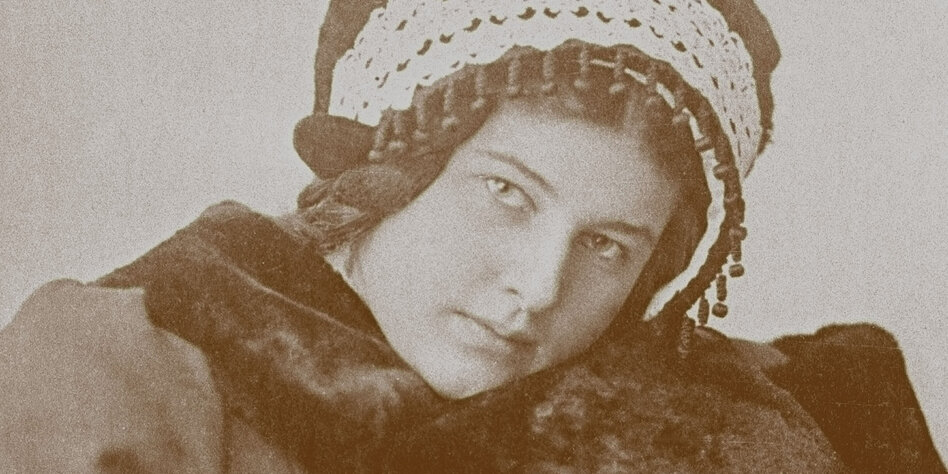Trotsky, Pasternak and Gorky admired the Russian journalist Larissa Reissner. Some of her reports are now available again in German.
Observer and revolutionary: Larissa Reisner Photo: akg
No one is watching, no one believes it,” writes Larissa Reissner
in November 1923 about an SPD commemorative event on the occasion of the 5th anniversary of the November Revolution somewhere in Berlin. The young Soviet journalist, who spent part of her childhood in Zehlendorf, paints a picture in short sentences of a ‘shameful and bankrupt bourgeois republic’.
The same year, Reissner also gained access to the Reichstag and wrote: “It is a gallery of crumpled gallows physiognomies who have understood how to taste power.”
The text balances somewhere between reportage and satire. Reissner’s rich irony expresses contempt for the “parliamentary game.” The loyal Bolshevik paints exclusively black and white images in her reportage sketches: “Berlin is starving. “Every day you pick up people on the street who have fainted from exhaustion,” begins a text about “working-class children” in the year of hyperinflation.
Article on the world stage
Their texts, the people and… were printed Politics of the Weimar Republic dissect coolly and come up with a clear political position, with a sharp tongue World stage. After her early death in 1926, several collections of texts were published in the USSR and in Willi Münzenberg’s communist Neue Deutsche Verlag.
After her posthumous defamation as a Trotskyist, she was a red flag in the Eastern Bloc after 1945, but was also forgotten in the West. Larissa Reissner met the writer Steffen Kopetzky by chance in 2019. His foreword to the new edition of her work sparkles with enthusiasm. With his fascination with Reissner as a woman, revolutionary and journalist, he follows the tradition of Joseph Roth, Kurt Tucholsky and Karl Radek.
Her texts are valuable because of their atmospheric, compact descriptions, which, thanks to their directness, make it possible to get closer to the reality of life at that time a hundred years later. What is missing is a genuine interest in the people she describes. These are just materials for them. Material from which she extracts the images that she can use to support her worldview.
The journalist Maria Leitner
At the same time, Maria Leitner also started her career as a journalist. Like her Soviet colleague, she also writes reports. She worked for three years at 80 different employers in the US and reported for Ullstein magazine Um. 1928/29 appears in Ullsteins pace her Berlin report series ‘People in the big city’, in which she gives people – from cinema pianists to beggars – a voice.
Leitner, who is involved in Münzenberg’s aid organization “Internationale Rote Hilfe”, unlike Reissner, does not need the explicitly political setting in her texts. Instead, empathy speaks softly in her sentences.
Undercover with Ullstein and Krupp
Larissa Reissner was never under contract with Ullstein-Verlag, but gained entry into the publishing house in 1924. Her report from the belly of the newspaper giant balances between fascination with ultra-modern newspaper distribution and smug criticism of Ullstein’s newspaper cosmos. This is how she characterizes it BZ at 12 noon as “a small puddle in which the world is reflected… There is no need to chew on this news at all. You just have to swallow and you will be informed.”
In the same year, Reissner also went undercover with Krupp in Essen and with aviation pioneer Hugo Junkers in Dessau. She writes in the foreword to “1924 – a journey through the German Republic”: “I wanted to see where the millions of wires and cables go, (I wanted to go to the) production workshops of German spirits and German cannons.” are her best reports.


